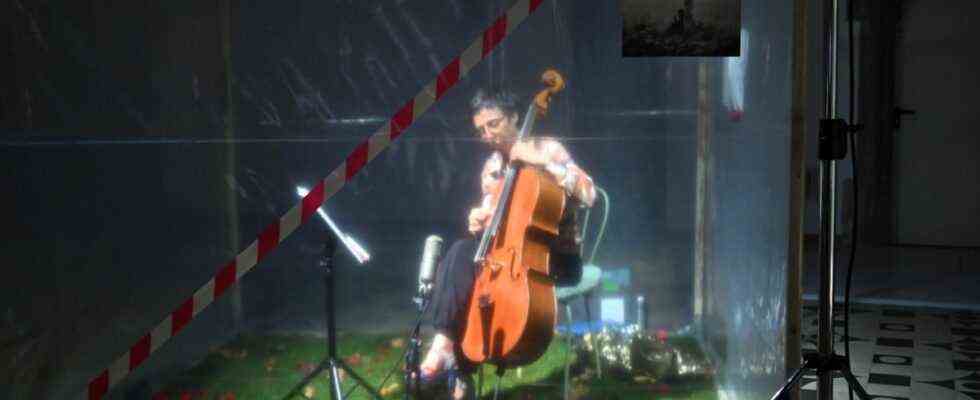The space itself is great. Now the Rathausgalerie is a very nice place anyway, through whose windows on the north side you can see passers-by with an obvious urge to buy before Christmas; At the same time, you find yourself in a refuge where you want to linger for hours, because what Stefan Winter has built there only gradually reveals its secrets. You don’t even have to decipher it in full, you can simply indulge in the aura of the room.
The installation is called “The Glass Cage” and there are actually seven of them standing around. They are not made of glass, but rather large, slightly milky cellophane cubes, each with a person inside, most of which make music. In the middle of the room is a kind of command station, a surveillance center with a large screen showing the images transmitted by video cameras from the cubes. Sometimes you can see inside a cube, sometimes on a split screen in all of them at the same time. There are images like from surveillance cameras, you see people as if in cells, in, well, glass cages.
The installation works on two levels. It is a metaphor for isolation, although it was created before Corona, it is now given a new urgency in pandemic times, but also addresses increasing digital surveillance. On the other hand, it is a concert distributed in space. Fumio Yasuda wrote seven hours of music for this, that is how long the installation performance lasts. You can perceive the music that emanates from the individual cubes as an overall sound, for example when you sit down by the fountain in the middle of the room. But you shouldn’t think of it as a strict, quasi-symphonic togetherness, rather as a sounding fluid made up of completely disparate individual parts. Then there are moments full of tension, for example when the cellist Julie Läderach and the accordionist Teodoro Anzellotti take turns in solemn melodies and rhythmic runs.
But you can also concentrate on one cube. And watch the dancer Breeanne Saxton for about hours. The back wall of your dice is a video screen that doubles your movements. If it moves wildly like a dervish, it creates a vortex of movements. If she climbs around on a folding ladder, swaying to the sounds in the room, one has her grace twice. Next door, Anne Gillot plays the flute, also a double bass recorder, a great thing that makes noises that seem like chants from the bottom of the sea. And Sool Park thinks. What he thinks is haunted by a printer in front of his cage. “The non-narrative forces silence. The obstacle of language leads to speechlessness.”

